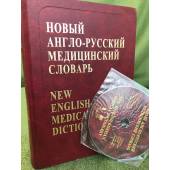
Cart
0
Product
Products
(empty)
No products
Free shipping!
Shipping
0,00 €
Packing fee
0,00 €
Total
Product successfully added to your shopping cart
Quantity
There are %d items in your cart. There is 1 item in your cart.

Categories
- Albums (2085)
- Antique (before 1850) old books (before 1941) (583)
- Art and culture (5357)
- Audiobooks, compact discs (CD) (121)
- Autographed books (249)
- Board games (19)
- Books for school (4643)
-
Books in foreign languages
(8481)
- Books in Altai (4)
- Books in Azerbaijani (47)
- Books in Belarusian (46)
- Books in Bulgarian (2)
- Books in Dutch (2)
- Books in English (6649)
- Books in Estonian (10)
- Books in Finnish (7)
- Books in French (43)
- Books in Georgian (37)
- Books in Greek (2)
- Books in Hungarian (6)
- Books in Italian (12)
- Books in Japanese (7)
- Books in Karelian (3)
- Books in Kyrgyz language (6)
- Books in Latvian (46)
- Books in Lithuanian (7)
- Books in Norwegian (4)
- Books in Polish (14)
- Books in Portuguese (2)
- Books in Slovak (2)
- Books in Spanish (17)
- Books in Swedish (3)
- Books in Tajik (34)
- Books in the Adyghe language (3)
- Books in the Balkar language (8)
- Books in the Bashkir language (73)
- Books in the Buryat language (5)
- Books in the Kalmyk language (8)
- Books in the Karachai language (1)
- Books in the Komi language (5)
- Books in the languages of the peoples of the Caucasus (7)
- Books in the Mari language (17)
- Books in the Mokshan language (1)
- Books in the Mordovian language (3)
- Books in the Nogai language (1)
- Books in the Tatar language (101)
- Books in the Udmurt language (10)
- Books in the Yakut (Sakha) language (27)
- Books in the Yarzyan language (2)
- Books in Ukrainian (977)
- Books in Uzbek (9)
- Chuvash language books (29)
- Kazakh language books (8)
- Business. Economy (1624)
- Calendars (41)
-
Children's Literature
(10344)
- Books for parents (357)
-
Children's creativity and leisure
(915)
- Children's games. Experiments and experiments (16)
- Coloring pages (12)
- Crafts, cooking for children (6)
- Drawing for children (11)
- Make with your own hands (29)
- Modeling, application (7)
- Organization of children's parties (2)
- Origami, paper craft (5)
- Puzzles, crosswords for kids (8)
- Questionnaires, diaries, albums (1)
-
Educational and educational literature for children
(1723)
- Attention. Imagination. Memory (27)
- Basic security (4)
- Creative development (46)
- Foreign languages (102)
- General development. Manuals, reference books (81)
- General preparation for school (45)
- Introduction to the outside world (69)
- Logic. Thinking (32)
- Math and counting (42)
- Teaching reading and writing (91)
-
Educational literature for children
(770)
- Biographies for children (37)
- Books for boys (21)
- Books for girls (19)
- Culture, art, religion (48)
- Encyclopedias, reference books and other educational literature for children (182)
- History for children (85)
- Nature and the environment (243)
- Psychology. Etiquette (12)
- Science, technology, transport (54)
-
Fiction for children
(4331)
- Books for kids (113)
- Books on cartoons and films. Comics (88)
- Detectives and adventures for children (192)
- Foreign prose for children (314)
- Myths. Legends. Historical prose for children (73)
- Poetry for children (147)
- Russian prose for children (417)
- Science Fiction, Fantasy and Horror for Kids (121)
- Tales (506)
- Tales and stories about animals (145)
- Soviet children's books (905)
- Toy books (40)
- Collected works. Multivolume editions (3678)
- collection sets (54)
- Comics (53)
- Cookery (1352)
- Dictionaries. Phrasebooks (1327)
- Electronic books (10)
- Encyclopedia (1019)
- Engravings (7)
- Feng Shui (112)
- Fiction (84362)
- German and Germany (35417)
- gramophone records, vinyl (131)
- Guides (2050)
- Healthy lifestyle. Healthy eating. Fitness (1821)
- History (9764)
-
House. Life. Leisure.
(7679)
- Dom. Life (3161)
- Erotic books, books about sex, kamasutra (193)
- Hobby. Leisure (1663)
- Reference Literature (2170)
-
Sport
(950)
- Aerobics. Fitness. Yoga. Dancing (31)
- Board games (158)
- Combat and martial arts (82)
- Extreme sports (12)
- Gymnastics. Light and weightlifting (8)
- Olympic Games (13)
- Other sports (51)
- Physical culture and sport (73)
- Self-defense. Survival (20)
- Sport games (23)
- Tourism (85)
- Water sports (28)
- Winter sports (18)
- Kits (different books) (139)
- Kits (magazines) (60)
-
Magazines and newspapers
(2557)
- Architecture, interior (9)
- Astrology, esotericism (39)
- Bills (233)
- Calendars 2020 (1)
- Calendars 2021 (3)
- Cars, hunting, fishing (14)
- Celebrities, ZhZL (34)
- Children's magazines (12)
- Computer, technology (4)
- Cooking and Recipes (25)
- Crosswords, Scanwords (2)
- Editions with TV program (133)
- Entertainment magazines (7)
- Fashion, style, beauty (17)
- History (111)
- Hobbies, interests (104)
- Home, family, leisure (75)
- House, garden, vegetable garden (34)
- Literature, theatre, music (235)
- Magazines for men (212)
- Magazines for parents (2)
- Magazines for women (108)
- Medicine, health (153)
- Religion (10)
- Russian press abroad (480)
- Science, technology, fantasy (168)
- Sewing, knitting, needlework (8)
- Society, politics (638)
- Special Editions (57)
- Travel, countries (14)
- Maps, atlases (658)
- Military business. Weapons. Special services (3926)
- Miniature books (148)
- Music. Sheet music (1028)
- Postage stamps (92)
- Postcards (191)
- Posters (37)
-
Professional, educational literature
(24624)
-
Applied sciences. Technique
(2517)
- Agriculture. Veterinary medicine (41)
- Architecture (360)
- Chemical industry (104)
- Construction (445)
- Design (136)
- Energy (68)
- Engineering. Instrumentation (184)
- Food industry (19)
- Jewellery (22)
- Life safety (46)
- Light industry (39)
- Metallurgy (28)
- Mining (83)
- Nanotechnologies (5)
- Oil and gas industry (53)
- Other industries (101)
- Polygraphy (8)
- Radio engineering. Electronics. Communication (263)
- Technical Sciences (330)
- Technology of production (100)
- Timber and wood chemical industry (13)
- Transport (183)
-
Computer Literature
(477)
- Administration. Information security (5)
- Computer for … (16)
- Computer networks. Internet (23)
- Databases (8)
- Design systems (CAD/CAM) (1)
- General questions (41)
- Graphics, design, multimedia, games (27)
- Hardware (4)
- Informatics (27)
- MS Office. Microsoft office programs (11)
- Operating systems (12)
- PC work for beginners (18)
- Programming languages and environments (37)
- Humanities (8822)
-
Legal Literature
(985)
- Civil law (54)
- Civil procedural law. Judiciary (8)
- Comments (12)
- Constitutional law. Administrative law (30)
- Criminal law (40)
- Criminology. Criminalistics (37)
- Customs law (8)
- Financial law (11)
- International law (34)
- Labor law. Social security law (9)
- Land law. Environmental law (3)
- Law enforcement agencies (23)
- Law in general. History and theory of state and law (29)
- Other branches of law (23)
- Regulatory acts. Reference literature (19)
- Right in everyday life (17)
- Textbooks and teaching aids (43)
- Workshops and practical aids (6)
-
Medicine and Health
(2430)
- Applied Medicine (45)
- Clinical Medicine. Internal Medicine (22)
- Cosmetology (22)
- Fundamentals of Medicine. Healthcare System (26)
- General pathology. General therapy (25)
- Narcology (12)
- Nervous system (29)
- Other branches of medicine (90)
- Pediatrics (51)
- Pharmacology. Toxicology (21)
- Popular and alternative medicine (1132)
- Psychiatry. Neuropathology. Sexopathology (71)
- Surgery (18)
- Monographs (1110)
- Natural sciences. Mathematics (2222)
- Social Sciences (5555)
-
Applied sciences. Technique
(2517)
- Religion. Esotericism (6389)
- Russian Abroad (books published abroad) (2597)
- Russian language (773)
- Russian language for children (Textbooks) (155)
- Soviet books until 1992 (12974)
- Yoga Books (161)
- Show All
More info
More than 20 years have passed since the publication of the first edition of the Psychiatry textbook, during which significant changes have taken place in this area. The need for social and legal regulation and guarantee of the rights of citizens in the provision of psychiatric care was determined. Taking into account modern legislative and instructive documents, the exactingness to the moral and ethical standards of the professional activity of a psychiatrist has increased, which was the basis for the formation of the Code of Professional Ethics of the Psychiatrist of the Republic of Belarus. The principles of observance of medical deontology for doctors of all specialties remained unshakable. These requirements for the activities of a doctor (and a psychiatrist in particular) formed the basis of the first section of the textbook. Modern requirements for clinical psychiatry are to create reliable and standardized criteria for the assessment of psychopathological disorders that could be compared and comparable internationally. In this regard, one should learn to translate the descriptive, qualitative characteristics of psychopathology into a formalized clinical language. The book contains control tasks that include a description of various signs of mental pathology - from symptoms and syndromes to various types of mental disorders. At the end of each control task, general questions are given, to which it is necessary to select relevant answers from the entire array of the task and formulate them using psychiatric terminology. In addition, tasks taken from real diaries, letters, statements of patients that require content-analytical work are described. The essence of content analysis (content - content) is to study the content of the text, highlighting in it the clinical manifestations of impaired cognitive processes and their qualification, which creates the possibility of forming the ability to compare, combine, generalize the analyzed facts. One part reflects a perceptual disorder, the other a thinking disorder, and each task contains a number of diagnostic features. Using examples of specific clinical case histories, the following section provides descriptions of diseases that are most common in a psychiatric clinic. This part includes 24 tasks, for each of which, based on the description of the disease, it is required to determine: 1) the leading syndrome; 2) detailed clinical diagnosis; 3) similar nosological forms from which the diagnosed disease should be distinguished; 4) treatment; 5) prognosis in relation to life, working capacity, recovery and outcome of the disease. In addition, there is a list of basic practical skills with a brief description of them, divided by their levels of complexity. Due to the high risk of mentally ill people committing suicide (suicidal acts), the textbook includes a diagnostic questionnaire (Hamilton scale) for assessing depression, which allows you to quantify the severity of depression and identify suicidal intentions. To gain skills in diagnosing alcohol problems and substance dependence associated with drug use, the Short Screening Questionnaire (SQA) to determine the presence of alcohol dependence and the extended Michigan Alcohol Screening Test are provided. The section on private psychiatry provides a description of mental disorders in a comparable way according to ICD-9 and ICD-10. The clinical manifestations of mental disorders are so natural that a psychiatric diagnosis, according to AB Snezhnevsky, can be compared with mathematical logic. In the process of diagnosis, a psychiatrist requires deep and comprehensive knowledge, logical thinking and professional experience. Knowledge of the semiotics of psychopathological disorders (symptoms, syndromes), their clinical designation and meaningful description allows one to translate the thoughts, feelings, statements, behavior of patients into the language of standardized professional terms and concepts. Logical thinking allows you to establish internal connections and dependencies between individual psychopathological manifestations, to regard them as a whole. Logical thinking makes it possible to combine symptoms into syndromes; according to the degree of their clinical significance, distinguish obligate (main) and facultative (additional) ones, thereby forming the structure of the syndrome. A logical understanding of the course of the disease, in which quite definite dynamic changes in psychopathological disorders occur, is a condition for establishing the severity of the process and predicting its further development. The professional experience of a psychiatrist is formed not only in the course of practical activities, but also in the study of other doctors' descriptions of clinical observations, both typical and atypical, or rare cases of mental disorders. The knowledge gained by the student can be objectively assessed on the test questions of the book, the answers to which provide for a variety of options for inductive-deductive reasoning. The appendices contain the correct answers for all test tasks for self-examination.
Data sheet
| Publication date | 2005 |
| Bookbinding | Hardcover |
All author\'s books:
Seller Info/Map |
Seller type: Company (business)
Подробнее
Book market
ISIA Media Verlag UG (L)
Volbedingstr. 2 A2-03
Leipzig, 04357
Germany
03416870612

Volbedingstr. 2 A2-03
Leipzig, 04357
Germany
03416870612































